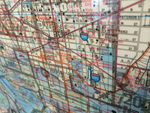On paper, the concept of a portrait gallery sounds like Field Trip Hell. But actually, you’ll be surprised how the best works capture the sparkle of life behind these charismatic shapers of history. Here, the names from your high school textbook flower into flesh-and-blood people, and the accompanying biographies are so sublimely evocative that subjects come alive. In 2019, the NPG began an intense refit geared toward expanding exhibition space into a Victorian-era building previously used as offices. The museum isn’t slated to re-emerge until spring 2023.
One of the gallery’s most instantly recognizable paintings is the Darnley portrait of Elizabeth I (1575), in which the Virgin Queen’s face is, as we all expected, a ghostly white—except conservators have recently discovered that in her time her skin was originally painted much rosier, almost normal, but the colors faded. Right away, it becomes clear that our perceptions of these once-breathing people are about to be reshaped. The troublesome Henry VIII is shown in several likenesses. One is a delicate 1537 paper cartoon by Hans Holbein the Younger (for a mural at Whitehall—a rare survivor from that palace), in which the king suspiciously peers with flinty grey eyes—hinting at a shiftiness that His Majesty probably couldn’t recognize in his own likeness, but that all who knew him feared.
One painting of King Edward VI, painted when he was 9, is executed in a distorted perspective (called anamorphosis) that requires it to be viewed from a hole on the right side of its frame, which is original. You’ll also find George Washington (he was born an Englishman, after all) and one of the only authoritative images of Captain James Cook, who was so pivotal in colonial expansion. Look for the Chevalier D’Eon, a male diplomat and fencing champion who lived as a woman in the late 1700s; for the adorable little nose of pugnacious William Hogarth in his terra-cotta bust; and for the sketch of Jane Austen by her sister Cassandra—friends said it stank. The Brontë Sisters appear together in an 1834 portrait found folded atop a cupboard in 1914; their alcoholic brother Patrick Branwell Brontë painted himself out, but his ghostly image is eerily reappearing. The genius of artist John Singer Sargent is immediately apparent in the 1894 likeness of poet Coventry Patmore; with just a few spare brush strokes, you feel like you know the old fella.
Fortunately, the portraits don’t stop when cameras were invented. The ever-divisive Margaret Thatcher is here; Princes William and Harry make appearances in a 2009 sitting, wearing the uniform of the Household Cavalry; and Beatrix Potter (1938), pictured in front of some sheep, looks as soft and kind as the gran you wish you had. Modern portraits (an impressionistic Ed Sheeran; Kate Bush in a 1978 chromogenic print) change often because there’s not enough room to show everything. Just about everything can be photographed (never with flash) or purchased as a poster in the gift shop.
Late Shift evenings (Fri 6–9pm), with DJs, talks, live music, and dozens of people lounging on gallery floors in sketching sessions, are great fun and a smart way to free up daytime hours to see more attractions. Also consider the rooftop Portrait Restaurant ([tel] 020/7312-2490), which has a breathtaking view of Nelson’s Column and Big Ben’s tower—it’s better than the National Gallery’s.





 About our rating system
About our rating system


